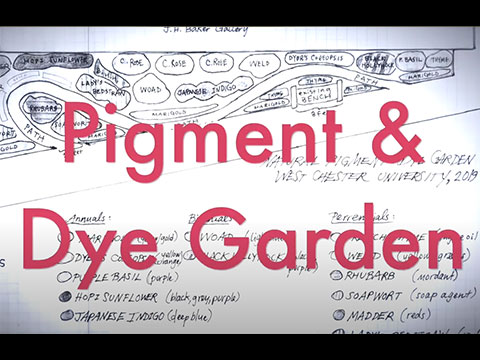Natural Pigments and Dyes Garden

About the Natural Pigments and Dyes Garden
In the summer of 2019, West Chester University added a fourth organic garden to campus. This garden is different, however, in that it is not to grow vegetables, as the gardens on south and north campus and at the president's residence are, but to grow plants used for making natural pigments and dyes. The initiative -- a faculty / staff collaboration -- was organized by Art + Design Professor Kate Stewart and WCU Grounds Manager Josh Braid, following a 2018 presentation by Professor Stewart in our Sustainability Research and Practice Seminar at which Mr. Braid was present. Located outside the E.O. Bull Center for the Arts, the garden is planted with Coreopsis, Black-eyed Susans, Japanese Indigo, Woad, Madder, Lady’s Bedstraw and other plants traditionally used in the production of natural dyes and pigments.
The garden serves as a teaching garden from which students learn about technological, political and cultural shifts that have had incredible influence over art historical movements and materials available to artists throughout time. Students taking various studio courses are also involved in cultivating and harvesting the plants in the garden for the creation of natural dyes, pigments and art materials. Students also develop an awareness of “slow fashion” through the processing of natural dye plants in response to “faster” conventional methods of production. This garden has the potential to reach a wide range of disciplines at WCU, reinforcing research in Art and Design courses, Art History courses, Theater and Costume Design, Sustainability-related courses and more.


